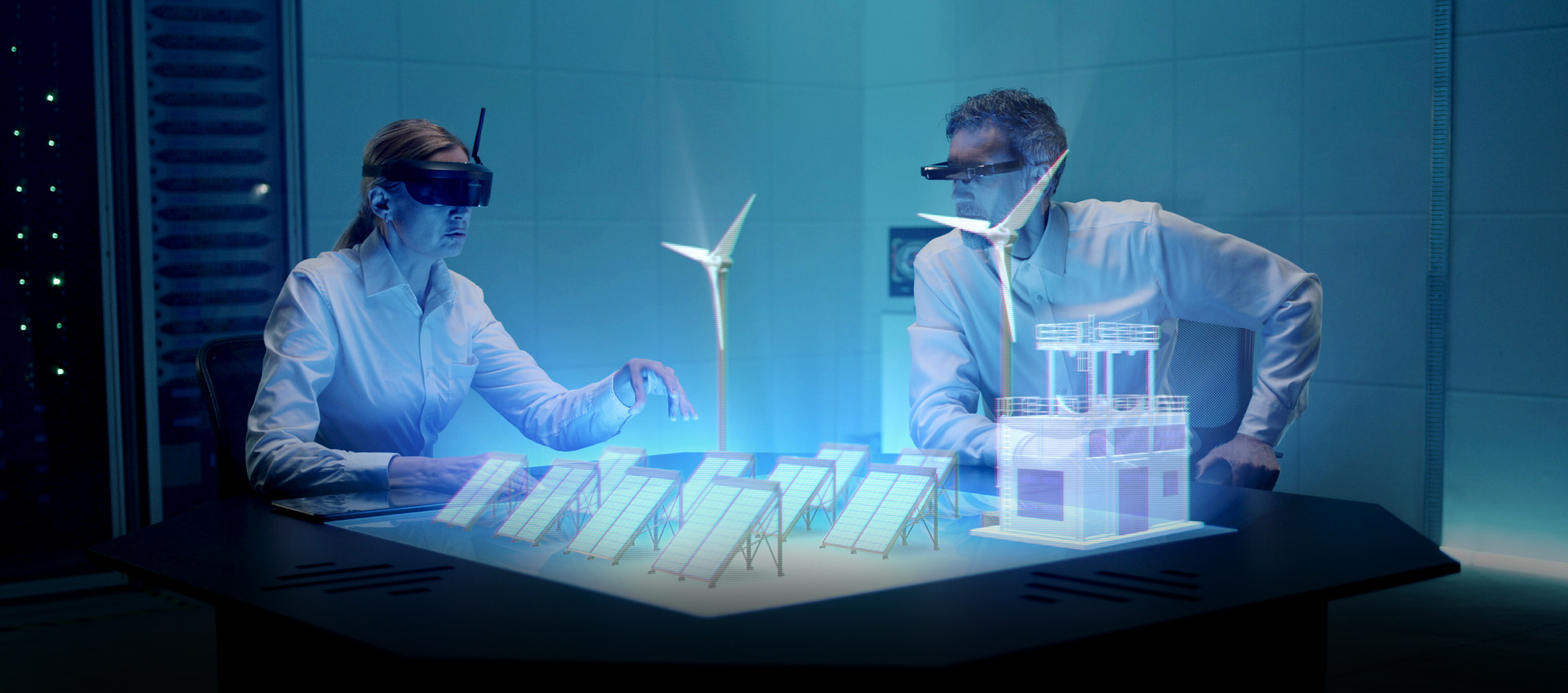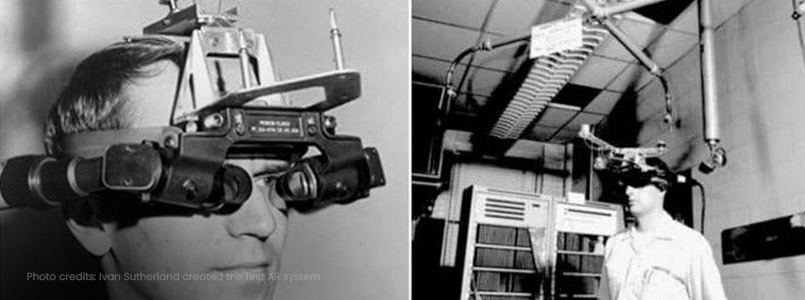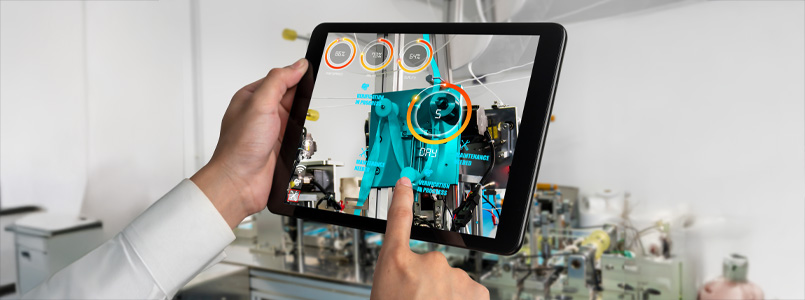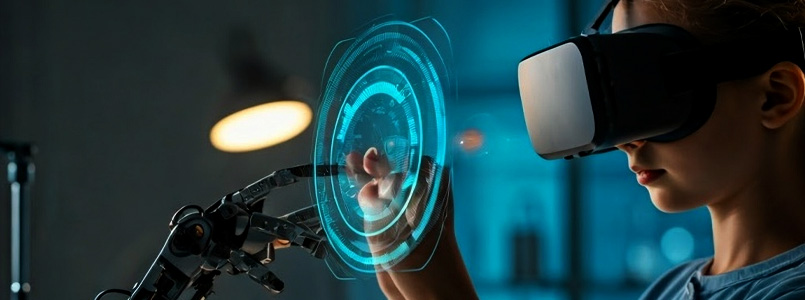
Back to Basics: What is Augmented Reality?
What if reality wasn’t the limit but just the beginning? Augmented Reality (AR) isn’t just a technology—it’s a redefinition of how we see, interact with, and transform the world around us. By layering digital elements onto our physical surroundings, AR takes the ordinary and makes it extraordinary. It’s not about replacing reality but enhancing it, giving every space the potential to tell stories, solve problems, and spark imagination in real time.
From its humble beginnings to its mind-bending applications today, AR is reshaping industries, rethinking possibilities, and rewriting the rules of engagement. As you explore its journey and potential, prepare to see the world not just as it is, but as it could be.
What is Augmented Reality?
Augmented Reality is a technology that overlays digital information—such as images, sounds, and other sensory enhancements—onto the physical world in real time. Unlike Virtual Reality (VR), which immerses users in a completely digital environment, AR supplements the real-world setting. AR apps or devices utilize cameras, sensors, and algorithms to add computer-generated elements to real-world settings. Imagine looking through your smartphone camera and seeing virtual furniture appear in your living room or navigating through a museum with interactive guides enhancing the exhibits.

History Behind Augmented Reality
The journey of AR can be traced back several decades. Here is a breakdown of the history of augmented reality;
1. 1960s - The Beginnings of AR Concepts
The Sword of Damocles (1968): Computer scientist Ivan Sutherland created what’s widely considered the first head-mounted display (HMD) device, called "The Sword of Damocles." It used simple graphics to simulate a basic AR environment. This device was extremely rudimentary, with limited graphics and heavy hardware that required it to be suspended from the ceiling. Nonetheless, it laid the foundation for visual augmentation concepts.
First HMDs: This era also saw the development of other head-mounted displays for experimental purposes in computer graphics and military simulation, although the term "Augmented Reality" had yet to be coined.
2. 1970s - Military and Industrial Exploration
Advances in Flight Simulation: The military began using HMDs in flight simulation and training. Pilots would wear headsets that displayed navigational data over their view of the real world, creating a basic form of augmented information overlay.
HUD (Heads-Up Display) in Aviation: AR concepts began to take root in heads-up displays for fighter pilots, showing them essential information like altitude, speed, and targeting data on their windshields without needing to look down.
3. 1980s - Early Augmented Reality Systems
AR for Medical Use: Scientists and doctors explored ways to use augmented reality for medical applications, especially in surgeries. Early systems were designed to assist in delicate procedures by overlaying guides and information directly onto the surgeon’s view of the patient.
ARToolKit Development (1980s-90s): An essential library for AR development, ARToolKit, began as a project that allowed developers to use markers to trigger AR elements. This toolkit laid down important principles for tracking and displaying AR graphics and became a foundation for future AR applications.
4. 1990s - The Term “Augmented Reality” and Increased R&D
The Term "Augmented Reality" (1990): Boeing researcher Tom Caudell first coined the term "Augmented Reality" to describe a technology that could help workers visualize complex wiring layouts for airplane manufacturing. This was the first time AR was explicitly defined as a tool that overlays digital information onto the real world.
AR in Medicine and Aviation: AR systems became popular in complex industries, where augmented data overlays could enhance operations and improve accuracy. In medicine, AR was used for imaging guidance in surgeries, and in aviation, it assisted in providing pilots with navigational support.
Military Applications: AR found its way into the U.S. military as it was integrated into training and operational simulations, particularly in HUD systems, which continued to advance in sophistication.
5. 2000s - AR on Mobile Devices
Advances in Mobile and GPS Technology: The arrival of smartphones with cameras and GPS opened the door to mobile AR applications. Combining camera feeds with location data allowed for new location-based AR experiences, such as city guides and augmented navigation.
First Mobile AR Apps (2008): With the release of Apple’s iPhone and Android-based phones, developers began to experiment with simple AR apps that could run on handheld devices. Early mobile AR apps overlaid information about nearby landmarks, restaurant recommendations, and basic gaming elements.
ARToolKit’s Transition to Open Source (2009): ARToolKit was released as open-source software, making it more accessible for developers and fueling the creation of AR applications across different sectors.
6. 2010s - Mainstream Adoption of AR
Microsoft’s Kinect (2010): Microsoft introduced Kinect for the Xbox, which used motion-tracking sensors and a camera to overlay digital elements on a user’s body, setting the stage for gesture-based AR experiences.
Google Glass (2013): Google launched Google Glass, a head-mounted display that projected AR information onto a small screen in front of the user’s eye. Although it didn’t achieve mass adoption, it drew global attention to wearable AR technology.
Pokémon Go (2016): The release of Pokémon Go was a pivotal moment for AR, bringing augmented experiences to mainstream audiences. The app used mobile cameras and GPS to allow users to catch virtual Pokémon in real-world environments, setting records for downloads and engagement.
ARKit and ARCore (2017): Apple and Google each launched AR development platforms for iOS (ARKit) and Android (ARCore), giving developers powerful tools to create AR applications. These platforms introduced features like world tracking and environmental understanding, which made AR applications more sophisticated and accessible.
7. 2020s - Advanced AR and Mixed Reality
AR in Social Media: Platforms like Snapchat, Instagram, and TikTok introduced AR filters, bringing AR experiences to billions of social media users worldwide. These AR filters could alter facial features, add animations, or transform real-world environments, making AR an integral part of everyday digital interactions.
AR Glasses and Wearables: Several companies, including Facebook (now Meta), Apple, and Microsoft, continue to develop AR wearables that integrate AR into everyday life. The goal is to create lightweight, fashionable AR glasses that allow users to overlay digital information seamlessly onto their real-world view.
5G and Cloud AR: The rollout of 5G networks has greatly enhanced AR’s capabilities by allowing for faster data transfer and real-time rendering of high-quality AR content. Cloud-based AR services also allow for more complex experiences, as data processing can occur remotely, reducing the need for high-powered devices.

The Science Behind Augmented Reality
Augmented Reality (AR) blends the real world with computer-generated visuals, allowing digital objects or information to be displayed on top of what we actually see around us. Unlike Virtual Reality (VR), which immerses you fully in a digital world, AR keeps you connected to your real environment, simply adding digital layers to it.
Here’s how AR works, broken down into key steps:
Hardware and Sensors: Devices like smartphones, tablets, and AR glasses use cameras, GPS, and motion sensors to understand the environment. For instance, your phone's camera provides a view of the world, while its sensors measure things like movement and orientation, helping the device understand its position and movement in space.
Computer Vision: AR relies on computer vision, which lets devices analyze what they’re "seeing" through the camera. It detects surfaces (like a table) and markers (like QR codes) to determine where to place digital elements. Some advanced AR can even recognize specific objects or environments, like landmarks or faces.
Processing: The device's processor handles the data from its sensors and computer vision algorithms to accurately place virtual objects. This means the device has to calculate things like depth, scale, and positioning in real-time, so the digital overlay feels natural and doesn’t seem out of place.
Display: After processing the data, the AR system renders (creates and displays) the digital objects on the screen, matching them to the real-world environment. So, if you’re looking at your phone screen, you’ll see the real world through the camera view with digital elements layered on top.
Interaction: Many AR systems allow interaction with virtual objects, such as rotating, resizing, or “moving” them by tapping or using hand gestures. These interactions are tracked by sensors and the camera, which then update the view in real-time.

Industries Using Augmented Reality
Augmented Reality (AR) has transformed many industries by providing interactive, immersive experiences that enhance real-world environments. Here are some key industries making substantial use of AR:
Retail and E-Commerce
AR enables customers to "try before they buy." Furniture stores like IKEA offer AR apps that let customers visualize furniture in their homes. Fashion and beauty brands use AR for virtual try-ons, allowing customers to see how clothes, makeup, or accessories look on them without physically trying them on.
Education and Training
AR enriches learning by bringing complex topics to life. In medical education, for example, students can visualize detailed 3D models of human anatomy. Engineering and technical training programs use AR to simulate real-world scenarios, providing hands-on experience with complex machinery or systems.
Healthcare
AR assists doctors in planning surgeries by creating detailed 3D models of patient anatomy, enhancing precision. In medical training, AR enables students to practice procedures in a realistic, yet controlled environment. Some applications help patients better understand their conditions by visualizing how treatments work in the body.
Real Estate and Architecture
AR allows architects and real estate agents to show virtual tours of properties or buildings under development. Clients can see detailed overlays of floor plans, layouts, and design features in the real-world setting, making it easier to visualize the final structure and make design decisions.
Manufacturing and Engineering
In manufacturing, AR is used for quality control, assembly assistance, and repair guidance. Technicians can see step-by-step instructions overlayed on machinery, helping reduce errors and training time. AR also helps engineers simulate and troubleshoot designs before physical prototypes are created.
Automotive
The automotive industry uses AR for both design and customer experience. Engineers use AR to visualize complex systems during the design phase, and some dealerships provide AR experiences that allow customers to customize vehicles virtually. AR also assists in navigation, displaying directions directly on windshields through heads-up displays.
Tourism and Travel
AR apps enrich the tourism experience by providing historical information, interactive maps, and directions. For example, visitors can point their devices at landmarks to learn about the history or significance of a site, or follow guided tours that overlay historical reconstructions on the present-day location.
Entertainment and Gaming
AR games like Pokémon Go have popularized AR by merging gaming with real-world locations. The entertainment industry also uses AR in movie promotions, immersive experiences, and even live concerts to create interactive experiences for fans.
Military and Defense
The military uses AR for training and situational awareness. AR systems can overlay navigation, mapping, and critical mission data on soldiers' goggles, helping them in complex environments. Training simulations use AR to prepare soldiers for real-life scenarios in safe, controlled settings.
Marketing and Advertising
AR allows brands to create immersive, memorable ad experiences. For example, interactive AR billboards or app-based experiences engage users by letting them interact with products virtually. This innovative approach captures attention and enhances brand engagement.

Successful Case Studies of Augmented Reality
The success stories of augmented reality showcase its versatility and potential to leave lasting impressions. Here are a few noteworthy examples:
1. IKEA Place (Retail)
Description: IKEA's AR app, IKEA Place, allows customers to visualize furniture in their homes before making a purchase. Using AR, customers can see how specific items look in real size and even test different color and style options to match their decor. Impact: IKEA Place has significantly boosted customer confidence in online furniture shopping, reducing returns and increasing customer satisfaction. It has also set a new standard in retail, influencing how customers interact with brands.
2. Dulux Visualizer (Home Improvement)
Description: Dulux’s AR app, Visualizer, lets customers see what different paint colors look like on their walls in real-time. Users simply point their phone at a wall, and the app virtually “paints” it in the chosen color. Impact: The app has made it easier for customers to choose paint colors, leading to a higher level of engagement and a smoother decision-making process. This tool also helps reduce dissatisfaction from color choice after the purchase.
3. L’Oréal’s Virtual Try-On (Beauty)
Description: L’Oréal’s AR application, developed with Modiface, allows customers to try on makeup virtually. The app shows different products like lipstick, eyeshadow, and foundation in real-time on the user's face. Impact: The try-on feature has increased customer confidence in online beauty purchases, leading to higher conversion rates and lower return rates. L’Oréal's AR success has paved the way for similar tools across the beauty industry, improving customer experience and setting a high standard for virtual try-on tools.
4. Boeing AR for Wiring and Assembly (Aerospace)
Description: Boeing uses AR to guide technicians through complex wiring assemblies in their aircraft. AR glasses overlay wiring instructions on the real-world equipment, helping technicians complete the work with step-by-step assistance. Impact: This AR implementation has improved productivity and accuracy in Boeing’s assembly process. It has reduced training time for new employees and has led to a significant decrease in errors, increasing both safety and efficiency in the assembly process.
5. Pepsi Max's AR Bus Shelter (Marketing)
Description: Pepsi Max created an AR experience at a London bus shelter, where screens displayed scenes of UFOs, tigers, and asteroids appearing to invade the street. Passersby could watch these exciting scenes unfold as if they were happening right outside. Impact: The campaign went viral, generating millions of views and interactions on social media, positioning Pepsi as a fun, innovative brand. This AR experience set a benchmark in the advertising industry for interactive and memorable customer engagement.
6. Siemens’ AR for Industrial Maintenance (Manufacturing)
Description: Siemens has developed AR solutions to assist maintenance teams in diagnosing and repairing equipment. By wearing AR glasses, technicians can see real-time information, receive instructions, and overlay 3D models on machinery to understand inner workings. Impact: Siemens’ AR solution has reduced downtime and increased maintenance efficiency. The technology also allows less experienced technicians to perform complex repairs, helping Siemens streamline training and operations.
7. AccuVein (Healthcare)
Description: AccuVein is an AR tool used to help healthcare providers locate veins more easily for injections or IV insertions. The device projects a real-time map of a patient’s veins on their skin. Impact: AccuVein has improved the success rate of needle insertion on the first try, reducing patient discomfort and increasing efficiency. This AR innovation has also led to significant savings for hospitals by reducing wasted supplies and time.
8. DHL Smart Glasses (Logistics and Warehousing)
Description: DHL has implemented AR glasses to assist warehouse workers with order picking. The glasses display information on the products’ locations and guide employees along the optimal path to collect items. Impact: This AR system has boosted efficiency by around 15%, reduced picking errors, and lowered training time for new employees. The success of DHL's AR implementation demonstrates how AR can revolutionize logistics by optimizing productivity and accuracy.
Final Thoughts
What if your world wasn’t confined to what you see? Augmented Reality (AR) and projection mapping are tearing down the walls of perception, blending the digital and physical in ways that challenge the ordinary. AR overlays a layer of possibility onto reality, where information and visuals interact seamlessly with your surroundings. Projection mapping, on the other hand, transforms blank spaces into vivid canvases, turning imagination into immersive, tangible experiences.
These technologies aren’t just tools; they’re a shift in how we understand and engage with our environment. As AR integrates deeper into daily life and projection mapping pushes creative limits, the boundaries of what’s possible blur. Whether you’re looking to shape ideas or simply witness the unexpected, diving into AR could mean stepping into a world where reality is anything but static.
It’s not about keeping up with tech trends—it’s about rethinking how you see, learn, and connect.